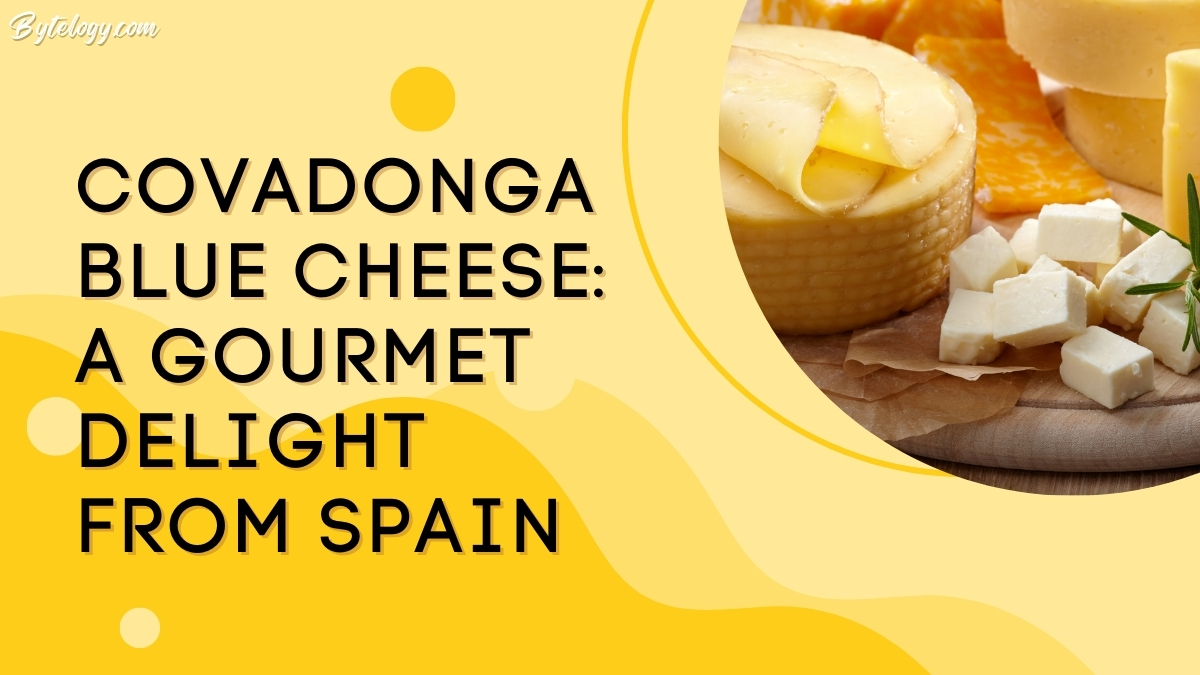Introduction of Covadonga Blue Cheese
Covadonga Blue Cheese is an terrific Spanish cheese noted for its powerful flavor, creamy texture and uncommon blue veins. Crafted with precision and subculture, this connoisseur cheese is a fave amongst culinary aficionados and cheese fanatics. Named after the historical region of Covadonga in Asturias, Spain, this cheese is profoundly steeped in the nearby subculture and meals. In this essay, we can look into the origins, manufacturing approach, flavor profile and culinary programs of Covadonga Cheese, making it a should-strive for any cheese aficionado.
Origins and History of Covadonga Blue Cheese
Covadonga Cheese originated from the Asturias area of Spain, a country famed for its beautiful meadows and rich dairy tradition. Asturias is widely referred to as the “Land of Cheese,” possessing numerous notable cheese kinds, including Cabrales and Gamonéu. Covadonga Cheese distinguishes out owing to its balanced taste, giving it a great option for numerous meals.
The production of blue cheese in Asturias extends back centuries, with conventional cheesemaking techniques handed down through generations.
The Production Process
The precise manufacturing procedure of Covadonga Cheese preserves its distinct flavor and texture. Here are the important steps:
- Milk Selection: High-quality milk is supplied from local farms, frequently from cows, goats or sheep that graze on the nutrient-rich meadows of Asturias.
- Curd Formation: The milk is heated and injected with Penicillium mold spores, then rennet is added to assist curdling.
- Molding and Draining: The curds are sliced, molded and let to drain, eliminating superfluous whey while conserving key nutrients.
- Salting: The cheese is salted to improve taste and manage moisture.
Taste and Texture Profile
The creamy crumbly structure of Covadonga Cheese produces a measured intensity in its flavors. The taste strength of Covadonga Cheese stands between weak and strong blue cheeses thus providing suitable satisfaction levels for novices and aficionados alike. The flavor profile of Covadonga Cheese includes a tangy and salty taste with earthy notes which provides an enjoyable umami experience.
Its natural smoothness allows Covadonga Cheese to blend easily as you apply it across toast and crackers. Theallette Cheese offers noticeable scents which do not overwhelm your senses during snack time.
Culinary Uses
Covadonga Cheese is incredibly flexible and may be used into a number of cuisines. Here are several excellent ways to consume it:
- Cheese Boards: Pair it with fruits like pears, apples or figs, along with nuts and honey for a gourmet plate.
- Salads: Crumble it over fresh greens, walnuts and a balsamic dressing for a refreshing salad.
- Sauces and Dressings: Melt it into creamy sauces for pasta or meat recipes, imparting a deep depth of flavor.
- Sandwiches & Burgers: Use it as a topping to improve the flavor of gourmet burgers and sandwiches.
- Baking & Cooking: Incorporate it into quiches, tarts or even blue cheese-stuffed mushrooms for a refined touch.
- Wine Pairing: Pairs nicely with powerful red wines like Rioja or sweet dessert wines like Port.
Health Benefits
Beyond its great flavor, Covadonga Cheese has various health benefits:
- Rich in Protein: Supports muscle development and repair.
- High in Calcium: Strengthens bones and teeth.
- Probiotics: Promotes gut health and digestion.
- Good Fats: Contains healthy fats that aid general well-being.
FAQs About Covadonga Blue Cheese
1. What makes Covadonga Blue Cheese distinct from other blue cheeses?
The smooth texture of Covadonga Cheese stands apart from the sharper textures of blue relatives Roquefort and Stilton. This controlled degree of sharpness enables broader attraction toward the product.
2. Can lactose-intolerant persons consume Covadonga Blue Cheese?
Blue cheeses become suitable for lactose-intolerant individuals because fermentation reduces their lactose content but medical approval remains essential.
3. How should Covadonga Blue Cheese be stored?
Refrigeration storage requires wax paper or parchment paper wrapping your cakes before using airtight storage to maintain their freshness.
4. How long does Covadonga Blue Cheese last?
When kept correctly, it may last up to 4-6 weeks. However, constantly check for indicators of deterioration such extreme dryness or ammonia-like aromas.
5. What wines go well with Covadonga Blue Cheese?
It works nicely with full-bodied red wines like Cabernet Sauvignon or sweet wines like Sauternes and Port.
6. Is Covadonga Blue Cheese acceptable for vegetarians?
It depends on the rennet utilized. Some traditional versions utilize animal rennet, however there are vegetarian-friendly solutions available.
7. Can Covadonga Blue Cheese be used in cooking?
Yes, it is fantastic for preparing sauces, dressings and baked meals, providing a rich and creamy taste.
Conclusion
The gastronomic treasure of Covadonga Blue Cheese illuminates Spain’s historic cheesemaking tradition because of its millennia of experience. All cheese aficionados should try Covadonga Cheese because it’s delightful smoothness pairs perfectly with wine and balances itself among gourmet cheese selections or in cooked dishes. Every kitchen should prioritize acquiring Covadonga Cheese if it remains unknown to your taste buds unless you feature this exceptional delicacy right away.

